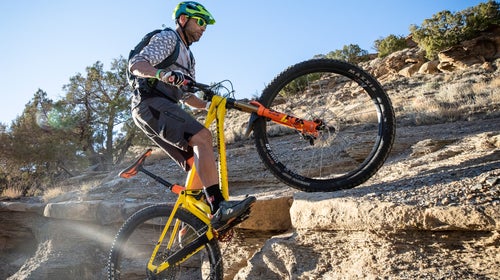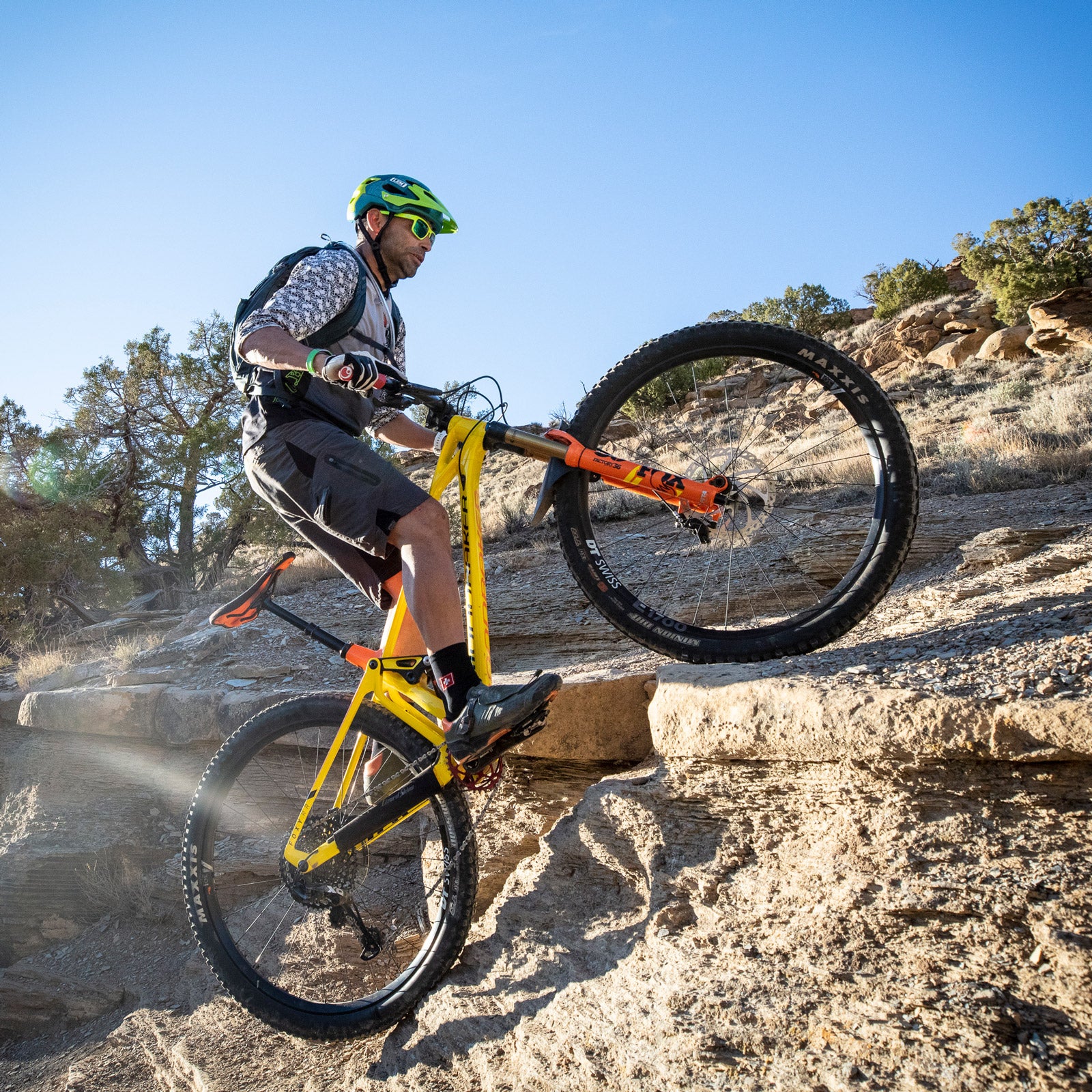We just finished the 2019 ���ϳԹ��� Bike Test, and while the lineup of mountain bikes was better than ever, I’d characterize 2019 as a year that’s more evolutionary than revolutionary for the dirt crowd.
The plus-bike craze has mostly receded, with tires settling in around 2.5 and 2.6 inches on most trail and all-mountain machines. Design trends are still moving toward longer, lower geometries, though on the chunky, step-laden trails in Grand Junction, we discovered that’s not always a good thing, often leading to bashed pedals and frames. And whereas conventional wisdom used to be that long-travel suspensions and 29ers were mutually exclusive, this year the largest growth category was in big wheels with 150 millimeters of travel and up. We’re still riding hard to settle on the winning bikes for print and full reviews online. In the meantime, the following were some of the most interesting and well-liked bikes of the test so far.
Transition Smuggler Carbon X01 (from $3,999; $5,999 as tested)
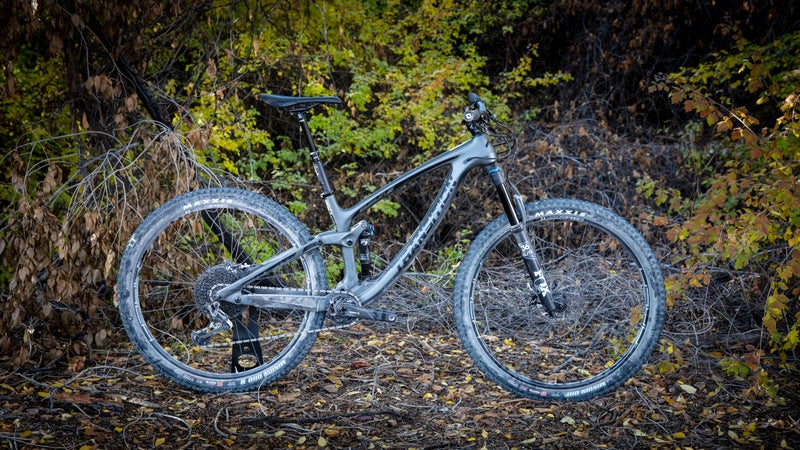
This proved to be the sleeper of the test. For a bike with not a lot of travel—120 millimeters out back and 140 millimeters up front—the Transition feels surprisingly capable, a product of the relaxed modern geometry: short chainstays, a long front-center paired to a short stem, and a 66-degree head angle. Yet unlike much of the extremely long and low competition, Transition has kept the bottom bracket at a reasonable height, so pedal strikes weren’t an issue. We also appreciated the high value over high sex factor build, including an X01 Eagle drivetrain, Stan’s Arch MK3 wheels, and 2.3-inch Maxxis Minion tires. Unassuming, relatively affordable, and ready to take on more than its numbers suggest, the Smuggler would make a perfect daily driver in all but the most rugged places.
Best For: Trail riding almost anywhere.
Lenz Behemoth 29+ (from $4,500; $8,200 as tested)
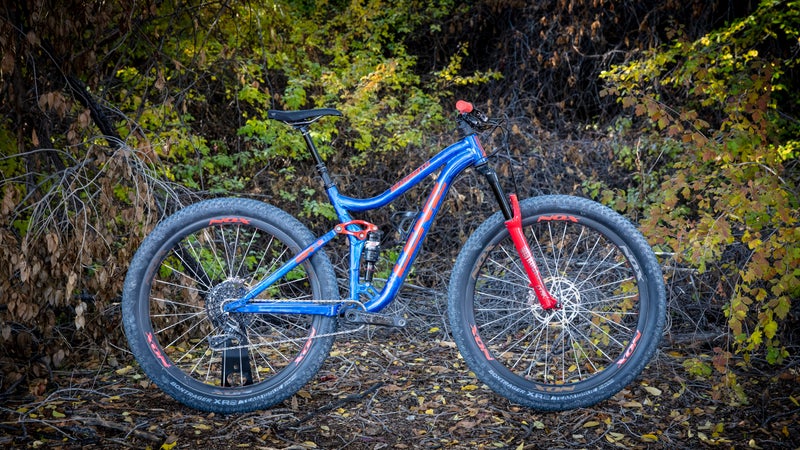
will not be for everyone, but it is the bike I have been waiting for ever since I rode my first 29+, the Surly Krampus, back in 2012. Other companies have tried to mate these oversize wheels—three inches of rubber on 29-inch hoops—to full suspension, but the Behemoth is the first bike that manages to get both the rollover and suspensive advantages of the size without feeling like a John Deere. The combination of supershort chainstays (424 millimeters, as short as many road bikes), tight wheelbase, and middle-of-the-road suspension numbers (125-millimeter Monarch shock paired to a 140-millimeter Lyric fork) made this bike feel nimbler and quicker than everything in the test, other than the XC bikes. Meanwhile, the high bottom bracket and tall wheels made easy work of the nastiest, rockiest terrain. It’s dumbfoundingly light (28.2 pounds) given the alloy frame and all that rubber, a result of some of the coolest, wildest wheel tech we’ve seen in years: The DT240s hubs are laced to Nox carbon rims with , which are about a third the weight of typical steel but almost twice as strong. That makes the wheels not only helium light but also incredibly compliant. The bike’s oversize look and soft ride earned it the slightly mocking moniker the Yoga Ball, yet time after time, testers took it out and came back with the beatific smile of someone who’s just finished a rolling meditation. This bike just feels good.
Best For: Rocks, ledges, and all manner of tech.
Mondraker Foxy Carbon RR 29 ($7,200)
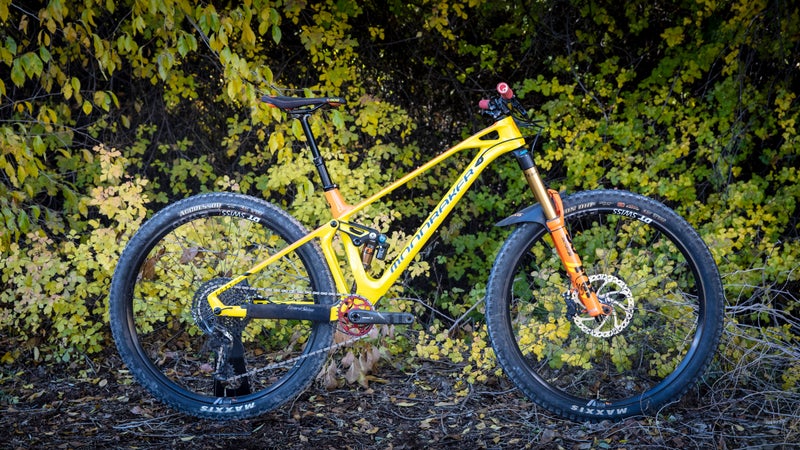
This Spanish company’s concept of Forward Geometry—long top tube and short stem—has driven the broader market, and yet the is still at the fringe of this movement, longer and lower than pretty much anything in the test. The position feels strange on the trail at first, but the stability of the long wheelbase and the direct, steamrolling trail manners made it popular with pretty much every tester, from cross-country workhorses to DH shredders. It’s a beautiful, distinctive-looking bike and right on point with long-travel 29 trends, with 150 millimeters of travel out back with the Fox DPX2 Evol shock and 160-millimeter Float 36 fork up front. A specialty tool for crushing the trail and racing enduro, the Foxy 29 doesn’t have a light touch, but if speed and stability are your game, it’s hard to beat.
Best For: Downhill stability. A solid choice for enduro racers.
Esker Elkat ($5,200)
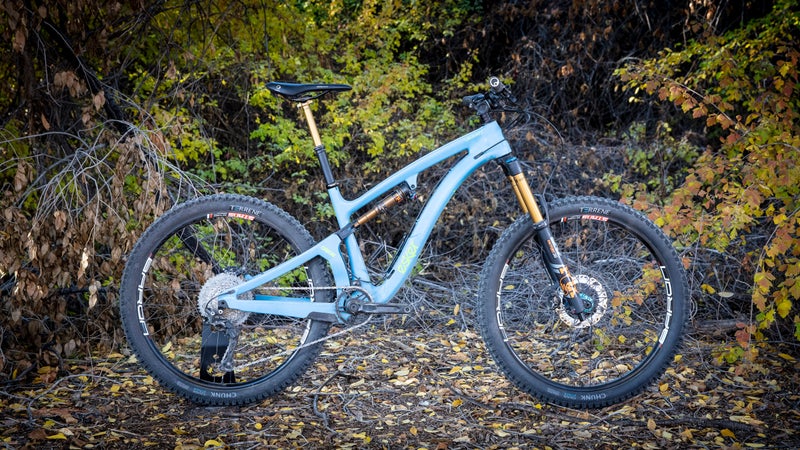
Dave Weagle has created some of the most popular and successful suspension designs on today’s mountain bike market—DWLink for Ibis and Pivot, Split Pivot on Devinci and Salsa, and Delta for Evil—so we were thrilled when we heard the tiny new brand would unveil his latest platform on its debut bike, a 150-millimeter carbon 27.5er. With its roots in moto, the Orion Suspension definitely has a unique and extremely certain feel, with a planted, almost glued-to-the-ground sensation both while climbing and on high-speed descents. The design also makes for one of the cleanest-looking bikes we’ve seen in ages. And the smart parts spec—Shimano XT, Stan’s Baron rims on Industry Nine hubs, Fox Transfer dropper—speaks to a company more interested in building a killer ride than ticking the boxes of what’s trendy. This is one hell of a debut all-mountain machine, though numerous testers wished the platform had been launched on a 29er. Also, we loved the traction of the Terrene Chunk tires, but the grippiness made the bike feel like we were riding through quicksand, up and down.
Best For: Steeps and all-mountain riding. An alternative to the everyday big brands.
Specialized Women’s Stumpjumper Comp Carbon 27.5 ($4,520)
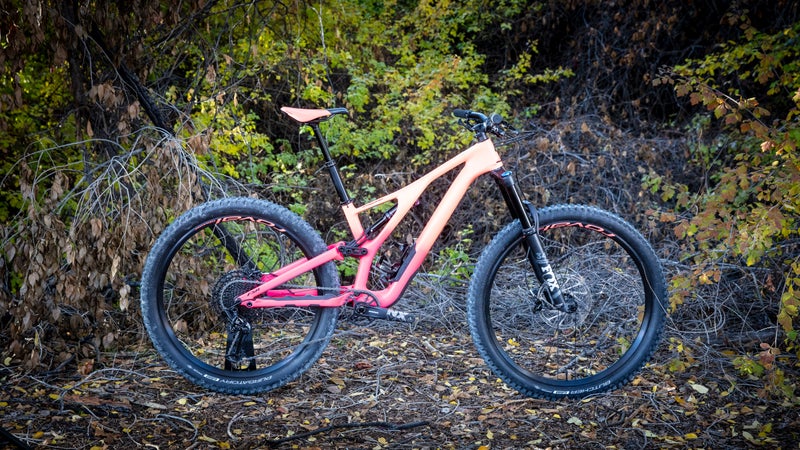
I’m not going to dwell on Specialized’s latest , because we have already waxed long and hard about just how competent a bike it is, both in its standard 29 form and women’s 27.5 iteration. With 150 millimeters of travel front and rear (140 millimeters in the 29er format), this bike is stiffer and more aggressive than its previous iteration, sports a geo that’s completely dialed for both pedaling and shredding, and didn’t register a single criticism with testers (other than the small wheels and the brand name). But the thing about this particular model is that it’s simply stunning. Spez fan or not, male or female, every single tester wowed over this paint job. It also debuts the company’s new women’s saddle, which ladies called possibly the most comfy they’ve tried. Pity that the low-end build meant the bike was a little portlier (30.1 pounds) than some of our testers liked.
Best For: Small women looking for a great all-around trail ride.
Zerode Taniwha Trail (from $6,250; $10,500 as tested)
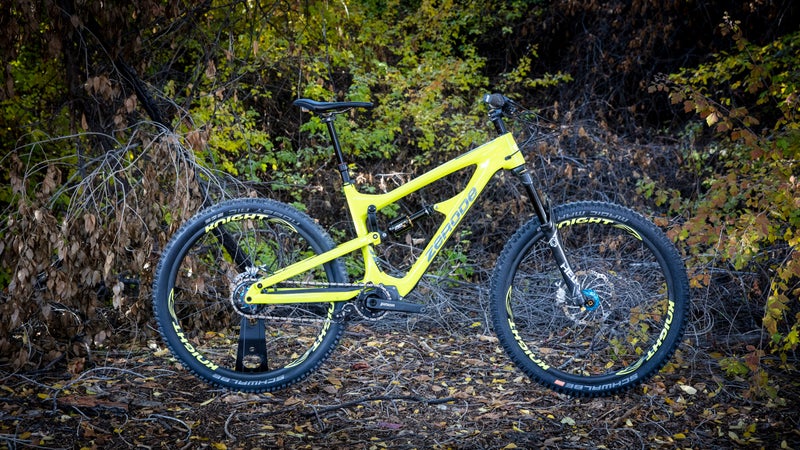
Look, not everyone loved the , but I am sold on the idea. The meat of this bike is the Pinion Gearbox, which forgoes a typical derailleur-and-cogs setup for an internal bottom-bracket-based system that yields as much range as any other modern drivetrain on the market, but without the dangly, slapping bits. The shifting is not exactly what you are used to: You cannot shift under load, as with a traditional setup, and you have to get used to Grip Shift, SRAM’s old twist shifters that replace a standard trigger setup, which feels like an anachronism. But the tradeoffs include a very light rear wheel, which leads to an incredibly snappy-feeling ride, as well as a narrow silhouette, making it easy to sneak the bike through tight spots and tech. With 140 millimeters of rear travel and a 150-millimeter fork, this bike should feel a lot like the Esker, but the Taniwha has a light touch compared to the Elkat’s more gravity-oriented suspension. It’s pricey technology, but I can’t wait to see where this bike will lead us.
Best For: Early adopters and anyone driven by cutting-edge design.
